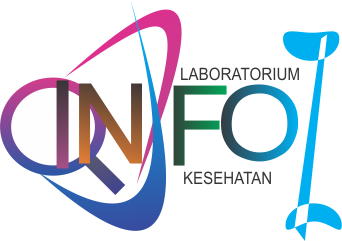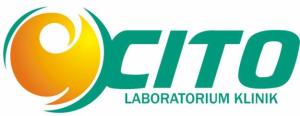Trend Technology in Clinical Laboratory | Perkembangan Teknologi Laboratorium
Trend Technology in Clinical Laboratory
Oleh Miswar Fattah, M.Si
Research & Esoteric testing Laboratory
Prodia Clinical Laboratory
RAKERNAS PATELKI 2011
BANJARMASIN, 27 APRIL 2011




Laboratorium akan menjadi sumber informasi yang paling dibutuhkan
- Hasil Dx tinggimemberikan informasi penting untukmembantu dokter membuat keputusan klinis yang relevan
- Pemeriksaan Molekuler dan Molecular Diagnostik dan patologi(PA )anatomi merupakan segmen yang berkembang pesat
- Pasaran PA meningkat 15% dandiprediksi lebih tinggi dengan adanya digitalisasi dan otamatisasi
- Pemeriksaan Pap akan menurun dan akan tergantikan dengan pemeriksaan molekular
- Market yang juga berkembang pesat adalah :
- ICH, ISH dan pewarnaankhusus
- Patologi digital
- Mikro array jaringan dan variasi genetik







Motivasi….
- Buat diri kita spesial dan perbanyak skill
- Belajar dari berbagai sumber
- Revolusi diri
- Buat fikiran kita mmemahami teknologi
- Buat hati kita bermanfaat


Current advance technology in laboratory research
- ELISA and Multiplex assay
- Tandem Mass Spectrometry
- DNA & Protein Microarray
- Real time PCR
ELISA and Multiplex Technology
- ELISA is traditional method
- ELISA frequently requires high volumes of serum and cost
- Increase research use multiple marker (Cytokine, inflammatory molecule etc)
- Difficulties also exist in comparing two cytokine levels measured by two different ELISA assays
- Recently, bead based and flow cytometry, chemiluminescence, or electrochemiluminescence-based multiplex assays have been developed





Note :
We dye them different colors. It’s not totally unlike mixing paint at your local hardware store. Only in this case we use two fluorescent dyes, one
red and one infrared. We mix those in precise proportions in organic solvents so that (*) when you introduce the white polystyrene microspheres
they will swell in the organic solvent containing the proper ratios of red and infrared dyes. This allows the precise proportion of red and infrared
dyes to diffuse into the interior of the microspheres


Note :
Then the dye is exchanged for a water-based solution which shrinks the microsphere back to its original size.
By varying the ratios of red and infrared dyes, Luminexis able to create a multitude of fluorescent microsphere sets.



Multiplex arrays advantages
- High throughputmultiplex analysis
- Less sample volume
- Efficiency time and cost
- Ability to evaluate the levels of one given inflammatory molecule in the context of multiple others
- Ability to perform repeated measures of the same cytokine panels in the same subjects under the same experimental assay condition
- Ability to reliably detect different proteins across a broad dynamic range of concentration
MULTIPLEX ASSAY TECHNOLOGICAL CONSIDERATIONS
- Potential interactions between multiple different antibodies and cytokines (antigens) in the sample/assay solution.
Tandem Mass Spectrometry
- Spectrometrydevices that measured the mass-to-charge ratio of ions
- Tandem mass spectrometer is one capable of multiple rounds of mass spectrometry

Note
The typical proteomics experiment consists of five stages. In stage 1, the proteins to be analysedare isolated from cell lysateor tissues by
biochemical fractionation or affinity selection. This often includes a final step of one-dimensional gel electrophoresis, and defines
the ‘sub-proteome’ to be analysed. MS of whole proteins is less sensitive than peptide MS and the mass of the intact protein by itself is
insufficient for identification. Therefore, proteins are degraded enzymaticallyto peptides in stage 2, usually by trypsin, leading to peptides
with C-terminally protonatedamino acids, providing an advantage in subsequent peptide sequencing. In stage 3, the peptides are separated
by one or more steps of high-pressure liquid chromatography in very fine capillaries and eluted into an electrosprayion source where they are
nebulizedin small, highly charged droplets. After evaporation, multiply protonatedpeptides enter the mass spectrometer and, in stage 4, a mass
spectrum of the peptides eluting at this time point is taken (MS1spectrum, or ‘normal mass spectrum’). The computer generates a prioritized list
of these peptides for fragmentation and a series of tandem mass spectrometric or ‘MS/MS’ experiments ensues (stage 5). These consist
of isolation of a given peptide ion, fragmentation by energetic collision with gas, and recording of the tandem or MS/MS spectrum.
The MS and MS/MS spectra are typically acquired for about one second each and stored for matching against protein sequence databases.
The outcome of the experiment is the identity of the peptides and therefore the proteins making up the purified protein population

Note
The left and right upper panels depict the ionization and sample introduction process in electrosprayionization (ESI) and matrix-assisted laser
desorption/ionization (MALDI). The different instrumental configurations (a–f) are shown with their typical ion source. a, In reflector time-of-flight
(TOF) instruments, the ions are accelerated to high kinetic energy and are separated along a flight tube as a result of their different velocities.
The ions are turned around in a reflector, which compensates for slight differences in kinetic energy, and then impinge on a detector that amplifies
and counts arriving ions. b, The TOF-TOF instrument incorporates a collision cell between two TOF sections. Ions of one mass-to-charge (m/z)
ratio are selected in the first TOF section, fragmented in the collision cell, and the masses of the fragments are separated in the second TOF
section. c, Quadrupolemass spectrometers select by time-varying electric fields between four rods, which permit a stable trajectory only for ions
of a particular desired m/z. Again, ions of a particular m/z are selected in a first section (Q1), fragmented in a collision cell (q2), and the fragments
separated in Q3. In the linear ion trap, ions are captured in a quadruple section, depicted by the red dot in Q3. They are then excited via resonant
electric field and the fragments are scanned out, creating the tandem mass spectrum. d, The quadrupoleTOF instrument combines the front
part of a triple quadruple instrument with a reflector TOF section for measuring the mass of the ions. e, The (three-dimensional) ion trap captures
the ions as in the case of the linear ion trap, fragments ions of a particular m/z, and then scans out the fragments to generate the tandem mass
spectrum. f, The FT-MS instrument also traps the ions, but does so with the help of strong magnetic fields. The figure shows the combination of
FT-MS with the linear ion trap for efficient isolation, fragmentation and fragment detection in the FT-MS section.

Note
a, Proteins are labelledmetabolically by culturing cells in media that are isotopicallyenriched (for example, containing 15N salts, or 13C-labelled
amino acids) or isotopicallydepleted. b, Proteins are labelledat specific sites with isotopicallyencoded reagents. The reagents can also contain
affinity tags, allowing for the selective isolation of the labelledpeptides after protein digestion. The use of chemistries of different specificity enables
selective tagging of classes of proteins containing specific functional groups. c, Proteins are isotopicallytagged by means of
enzyme-catalysedincorporation of 18O from 18O water during proteolysis. Each peptide generated by the enzymatic reaction carried out in
heavy water is labelledat the carboxyterminal. In each case, labelledproteins or peptides are combined, separated and analysedby mass
spectrometry and/or tandem mass spectrometry for the purpose of identifying the proteins contained in the sample and determining their relative
abundance. The patterns of isotopic mass differences generated by each method are indicated schematically. The mass difference of peptide
pairs generated by metabolic labellingis dependent on the amino acid composition of the peptide and is therefore variable. The mass difference
generated by enzymatic 18O incorporation is either 4 Daor 2 Da, making quantitationdifficult. The mass difference generated by chemical tagging
is one or multiple times the mass difference encoded in the reagent used.



Microarrays DNA Chips in General
- Microarrays measure the gene expression of many genes in a sample by measuring RNA abundance in a sample.
- As each gene is transcribed into mRNA on its way to protein, the amount of this mRNA corresponds to the amount of gene expression.
- Typically in an experiment a part of a organism is frozen and RNA extracted.
- (Cells in culture, Tumors, other.)













Note
Applications of protein microarrays. There are two general types of protein microarray: analytical and functional protein microarrays. Analytical
protein microarrays involve a high-density array of affinity reagents (e.g. antibodies or antigens) that are used for detecting proteins in a complex
mixture. Functional protein chips are constructed by immobilizing large numbers of purified proteins on a solid surface. Unlike the antibody antigen
chips, protein chips have an enormous potential in assaying for a wide range of biochemical activities (protein-protein, protein-lipid,
protein-nucleic acid, and enzyme-substrate interactions), as well as drug and drug target identification. Small molecule and carbohydrate
microarrays are other types of analytical microarrays that have been demonstrated to be capable of studying protein binding activities
to ligandsand carbohydrates.
Reference: Zhu, H. and Snyder, M. Protein chip technology. Current Opinion in Chemical Biology, 2003, 7:55-63.

Conclusion :
- Mass spectrometers exist in many different configurations to allow different problems to be solved
- Significant technology development Increase creativity to explore life science
Sumber Artikel : Patelki.org

 Kirim Saran Dan Pertanyaan Anda Ke:
Infolabkesehatan@yahoo.com
Kirim Saran Dan Pertanyaan Anda Ke:
Infolabkesehatan@yahoo.com







